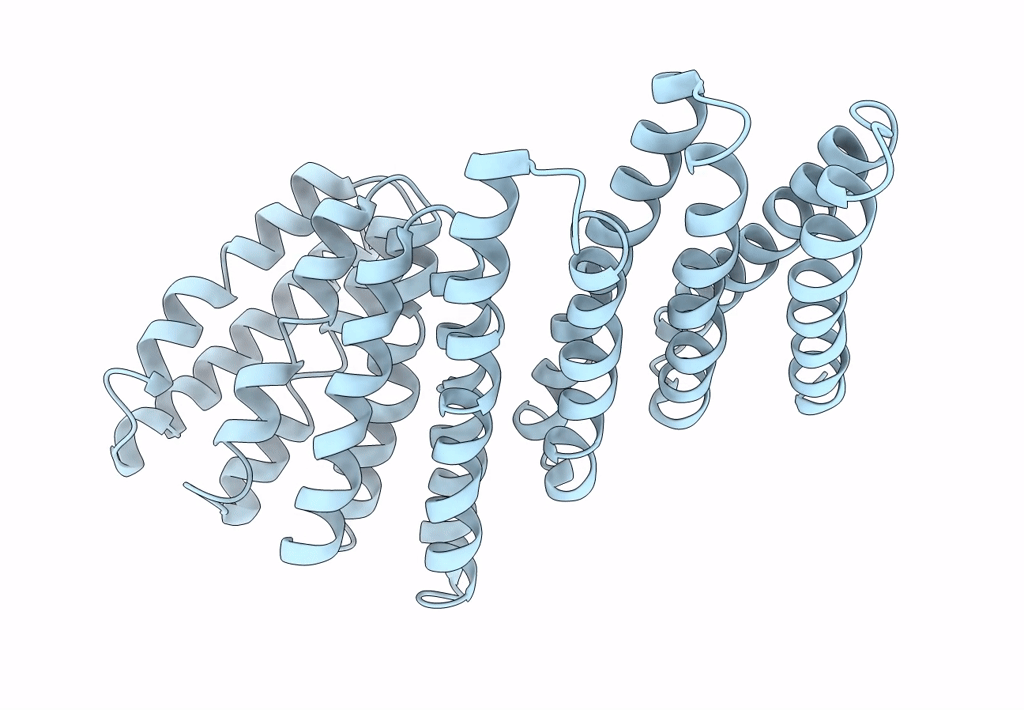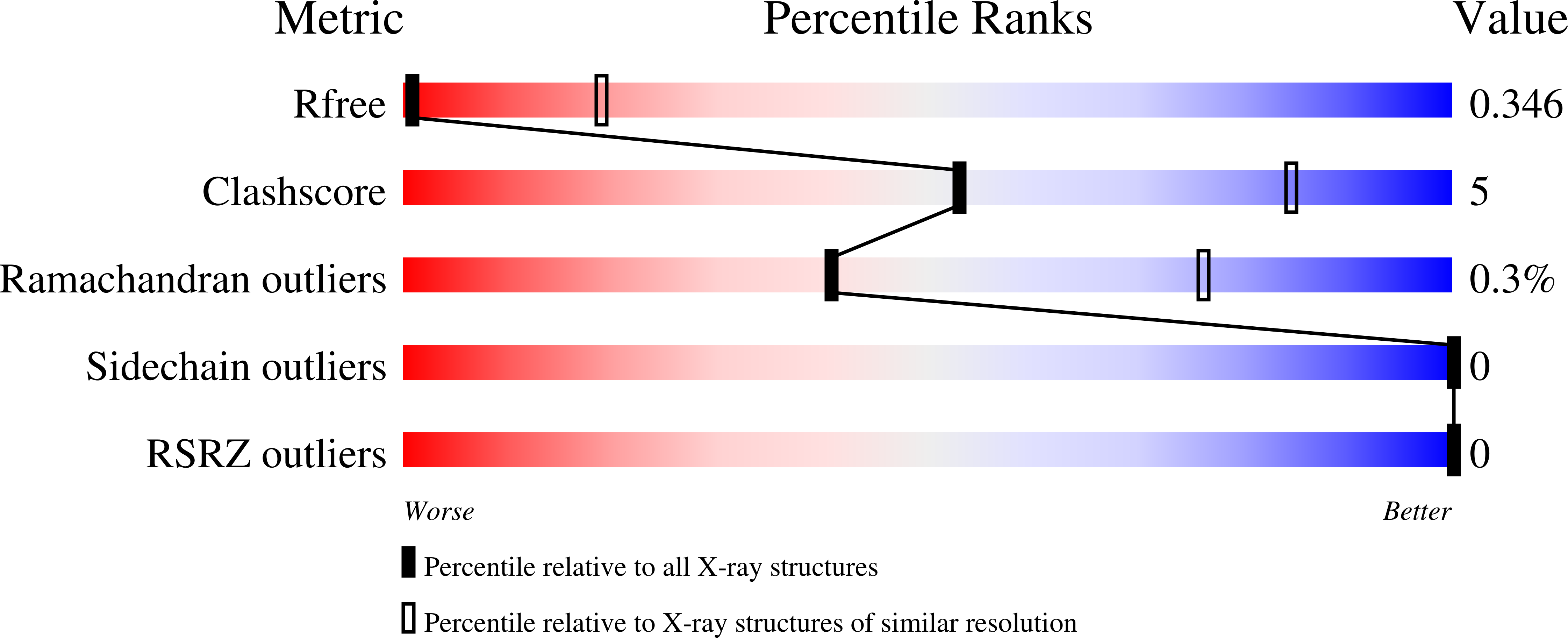
Deposition Date
2022-12-22
Release Date
2023-06-28
Last Version Date
2025-01-01
Entry Detail
PDB ID:
8FLX
Keywords:
Title:
De novo designed homotrimer; the fusion product of BGL17 and DHR59
Biological Source:
Source Organism:
synthetic construct (Taxon ID: 32630)
Host Organism:
Method Details:
Experimental Method:
Resolution:
4.50 Å
R-Value Free:
0.34
R-Value Work:
0.30
R-Value Observed:
0.30
Space Group:
I 2 3


